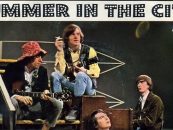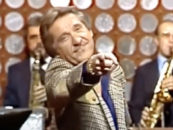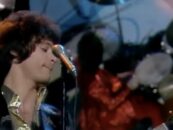
Bob Dylan outside his Woodstock home in 1968, two years after the accident (Photo © Elliott Landy; used with permission)
In 2021 we celebrated the 55th anniversary of several of classic rock’s most epic moments—the Beatles’ final public concert, the release of the Beach Boys’ Pet Sounds, the debut of TV’s Monkees and so much more. But there’s one date that one rock legend would rather forget: July 29, 1966. On that day, Bob Dylan nearly died.
He was living in bucolic Woodstock, N.Y., having sought sanctuary from the noise, chaos—and drugs—that had consumed his life during the past year, ever since he’d “gone electric” at the Newport Folk Festival in July of ’65. He’d broken through commercially in that heady summer with the #2 smash hit “Like a Rolling Stone”—still considered by many today to be the greatest rock song of all time—and had released two seminal Top 10 albums, Bringing It All Back Home and Highway 61 Revisited. Already many were calling Dylan the “voice of his generation,” a tag he would later say was wholly unwelcomed by him.
Related: Dylan goes electric at Newport
Dylan’s latest release, the double-LP Blonde on Blonde, which many considered his most important work to date, had just charted in Billboard on July 23, 1966, when six days later Dylan set out for a ride through the hilly upstate New York environs on his Triumph T100 motorcycle, the latest in a series of bikes he’d owned since acquiring his first Harley in his teens.
With his wife Sara Lowndes following him in a station wagon, Dylan, according to Barney Hoskyns’ 2016 book, Small Town Talk [available here], a history of the town’s music scene, left his manager Albert Grossman’s house, drove north on Striebel Road, then turned right on Glasco Turnpike. The sun was in his eyes, Dylan later recalled (although at first he said he’d hit an oil slick), and he was temporarily blinded. Dylan slammed on the brake, the rear wheel locked up and, as he later confirmed, he “went flyin’.”

The intersection of Striebel Rd and Glasco Tnpk, 2019 (Photo © Greg Brodsky)
Related: Review of Small Town Talk about Woodstock, the town
Although he was in pain, Dylan at first did not feel he needed medical help, but it was soon determined that he indeed did, and the rock star was taken by his wife to a doctor an hour away—his condition was deemed serious enough that he stayed at the doctor’s residence for some 10 days while beginning his recuperation from a cracked vertebra and other injuries. In the wake of the accident, Dylan canceled all upcoming concert dates and, according to Small Town Talk, simply “lay in bed and stared out the window” for some time, “feeling relief that he could simply stop.”
Related: Photos like the Infrared one of Dylan, above, by Elliott Landy are available for purchase here
As Dylan suddenly withdrew from public life without explanation (Grossman liked to shroud his client in mystery), rumors began to swell. The accident itself remained merely a rumor for some time, but speculation on the seriousness of his condition quickly took on a life of its own. Was Dylan dead? Disfigured or brain-damaged? Would he ever make music again? In his own memoir, Chronicles, Dylan wrote, “I had been in a motorcycle accident and I’d been hurt, but I recovered. Truth was that I wanted to get out of the rat race. Having children changed my life and segregated me from just about everybody and everything that was going on. Outside of my family, nothing held any real interest for me and I was seeing everything through different glasses.”
What his fans didn’t know at the time was that, as he recovered in Woodstock, Dylan, in 1967—the year of Sgt. Pepper, Hendrix, Monterey Pop and the like—was entering a prolific songwriting stage, turning out dozens of songs (among them “The Mighty Quinn” and “I Shall be Released”) and recording them informally in a house known as Big Pink. Those sessions, later dubbed the “Basement Tapes,” with accompaniment from the musicians who would become known as The Band, remained officially unreleased for years, although they leaked fairly early on bootlegs.
If you’re a new Best Classic Bands reader, we’d be grateful if you would Like our Facebook page and/or bookmark our Home page.
Although his live appearances were few in the years following the crash—the most notable taking place at the 1969 Isle of Wight festival in England and at George Harrison’s Concert for Bangla Desh in ’71, Dylan eventually made his way back to the stage with a momentous 1974 tour with The Band. He’s rarely stopped playing or recording since.
Tickets to see Dylan perform are available here and here. His extensive recorded legacy is available in the U.S. here and in the U.K. here.
- When Brownsville Station Were Smokin’ - 07/05/2025
- Janis Joplin & Jorma Kaukonen: The Tale of the Typewriter Tape - 06/25/2025
- Peter Asher Interview: Pop Star to Top Producer - 06/22/2025






3 Comments so far
Jump into a conversationdidn’t Richard Farina die in a motorcycle accident in that same event?
No, Farina died in California in April ’66, but yes it was also a motorcycle accident.
Going to a party to celebrate the publishing of his book, Been down so long it looks like up to me? But that’s a different story so they say. I grew up in those times. It’s amazing we didn’t all die in motorcycle accidents.